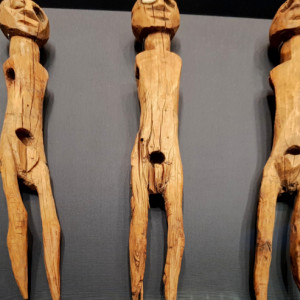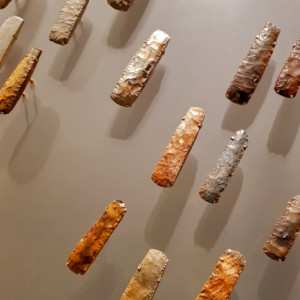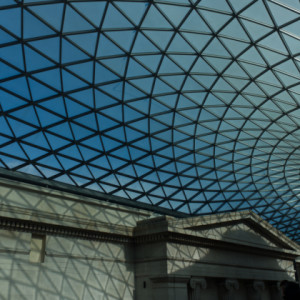The Way We Were
This morning I went to the 'World of Stonehenge' exhibition at the British Museum. Yesterday I was asked what I would be interested in seeing there and I replied flippantly, 'Well not a whole lot of carved axe-heads'. How wrong I was - I was fascinated by them: the beauty of the colourful and striated stones that our ancestors had chosen to shape, the mammoth quantity of labour that had gone into working something as hard as flint when there is no metal to shape it, the beliefs in a world where such a precious, hard-won tool could be buried with its maker, and those of a later time where someone was buried with an axe that was 1,000 years old. Who was he, to have had it taken out of use after 40 generations?
Unlike most narratives I've seen on Stonehenge, which focus on where the sarsens came from, how they were transported and manoeuvred into position and how the lintels were lifted, this exhibition explored Stonehenge's cultural importance and the human story of that time and what followed over the centuries and millennia.
Although a huge number of labels included the word 'perhaps', I was struck by the evidence of communication between people in Britain and people across a large expanse of what is now mainland Europe. It's unsurprising that peoples who had recently taken up farming (an idea that came to Britain from mainland Europe) should be interested in what the sun taught them about seasons, but items similar to those at Stonehenge have been found in places far away: a ritual animal headdress in Germany, sun pendants in Italy, daggers in Spain, as well as stone-carving patterns in Northern England, Scotland and Ireland. Things were traded - items as well as ideas have been found very far from where they were made - and people travelled. Some came long distances to settle near Stonehenge.
There was even a bit of speculation about sex and gender: later graves where men were buried with women's items and vice versa, and the removable phalluses from these yew statuettes. See first extra for the transformation of these figures into women. (These are from East Yorkshire, not Wiltshire and are later than Stonehenge, between 1,100 and 500BC.) 'Their fluid identities,' the label said, 'may represent supernatural beings with the power to cross the watery depths to the spirit world beyond'.
Well, perhaps, but I can't help thinking there's a little bit of 21st century thinking going on here.
Other extras: axe-heads (in penance - sorry ancestors) and that glorious Great Court roof, under which I later had lunch with some old friends.




Comments
Sign in or get an account to comment.


